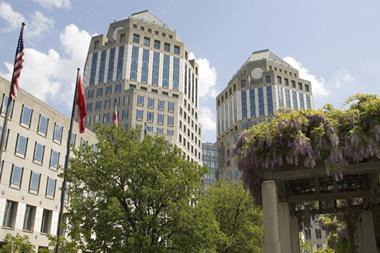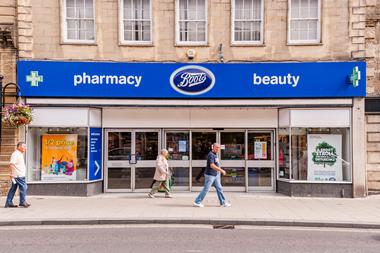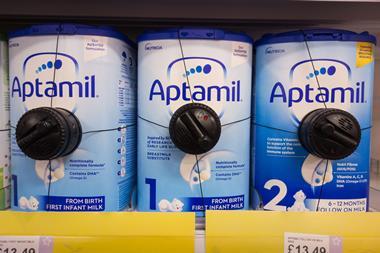Activist investors have never been more active. So far this year investors have ploughed $7.2bn into funds deemed ‘activist’ by HFR -the highest inflow since 2003. The accumulation of large cash reserves, coupled with low interest rates for borrowing, appear to have created fertile conditions for activists. So much so that influential business magazine Forbes announced earlier this year ‘the golden age of activist investing’ was upon us.
No one is safe from their clutches. In recent months activist investors have taken aggressive positions on global brands like Microsoft and Apple, that were previously considered ‘untouchables’. And among the biggest names in the food and drink industry rich pickings continue to be had, with PepsiCo, Cadbury, Kraft, Heinz, Hain Daniels, Smithfield Foods and Procter & Gamble all targeted in recent years.
But who are these people? How do they operate? How can companies ward off an activist? And is it necessarily a bad thing to have an activist investor taking an interest in your business?
The perception of activist investors has changed significantly since the 1980s when the tactics employed by Wall Street legends T. Boone Pickens and Carl Icahn led many people to view activists as little more than asset strippers (or ‘barbarians’, a term immortalised in the book, Barbarians at the Gate, about the infamous takeover of RJR Nabisco).
A new generation of ‘rock star’ activist investors, alongside stalwarts like Icahn, have attempted to rebrand themselves as champions for all shareholders. As a result, this niche investment activity is no longer perceived to be about pillaging companies to make a quick buck.
“What it’s really about is change and ideas usually fostered from a minority ownership position,” says Christopher Davis, chair of mergers and acquisitions and investor activism groups at Kleinberg, Kaplan, Wolff & Cohen.
“For the most part we’re not seeing tender offers, takeovers and break ups. What you’re seeing is people coming in saying, ‘Here’s the problem: you have a great underlying company with some real value but this management team and this board simply cannot unlock that value and return it to shareholders, so we’ve got to find a way to do that.’”
How they go about implementing their aims differs depending on the individual circumstances of the company being targeted. Most activist campaigns start quietly, with communications taking place between investors and board members behind the scenes. This initial conversation is a key stage that determines whether or not the relationship between investors and the board will be friendly or fraught.
“The company’s reaction to those first overtures makes an incredible amount of difference, because the company can go a long way towards short circuiting an activist campaign and taking the wind out of their sail by saying ‘OK, let’s talk about your idea. We’re open to implementing good ideas regardless of where they come from,’” explains Davis.
If the activist isn’t satisfied with the response they receive from this initial dialogue, things can start to get a little dirty. They might launch a full on ‘proxy fight’ which involves a letter writing campaign to shareholders and - at the appropriate time in the financial year - nominating their own people to join the board of directors of the company being targeted. (Trian - a fund managed by activist investment legend Nelson Peltz - issues detailed ‘white papers’ outlining its proposed investment strategy for companies it is targeting).
Activist objectives
Most of the time the main concession that activists are pushing for is to gain board representation. According to Activist Insight, attempts to gain board representation account for nearly 30% of activists’ objectives - and more often than not they’re successful in their objectives, says Josh Black from Activist Insight.
“In terms of campaign objectives, this year activists have got what they wanted 102 times, been unsuccessful 50 times and partially successful in 11 instances. There have been 16 compromises,” says Black.
A compromise may, for instance, mean an activist taking one or two seats on the board instead of the three they initially requested. With board representation secured the activist can start to agitate for the changes in business strategy that they think are necessary to revive a company’s fortunes.
These strategies can vary wildly. For instance, in a white paper issued by Trian in July this year, it outlined a bold new vision for PepsiCo that would “drive substantial value creation” for all shareholders - the fund owned in excess of $1.3bn PepsiCo shares at the time.
Trian claimed that PepsiCo had reached a “strategic crossroads” and needed to choose from two radically different options: a merger with Mondelez to create a global snacks behemoth, with the beverage businesses spun off. Alternatively, the company needed to separate its snacks and beverages business.
The activist investor argued that grappling with the differing needs of its fast-growth snacks and slow-growth beverage divisions had caused the group to underperform and that by embracing the former suggestion it could lead to approximately $175 of implied value per PepsiCo share, with the latter approach yielding approximately $136-$144 of implied value per share by the end of 2015.
Peltz’s proposed strategy for PepsiCo was a bold, headline-grabbing play that’s unlikely to happen in the short term at least, but it was typical of the changes activists typically demand.
Activist demands
In addition to pushing for the sale of whole or part of the company (14%), activists also commonly push for share repurchases or dividends (6% and 8% respectively), according to Activist Insight’s data. Of the activists investor groups tracked by Activist Insight, only 3% have been concerned with cost cutting, with 4% focusing on executive remuneration this year, which may reflect the economic climate and redundancies made over the past few years, says Black. “So it might not be as painful to be pursued by an activist as by a private equity group,” he adds.
The fact that, generally speaking, companies targeted by activist investors tend to perform well when news of their interest breaks, might also help to lessen the blow of being pursued.
In a paper published earlier this year titled ‘The Long-Term Effects of Hedge Fund Activism,’ Lucian Bebchuk, Friedman professor of law, economics and finance and director of the programme on corporate governance at Harvard Law School, found that activist investors have a useful role to play in capital markets.
As part of his study Bebchuk examined approximately 2,000 “interventions” by activist hedge funds during the period 1994-2007 and then tracked the operating performance and stock returns of these businesses for five years following the intervention.
The outcome of his study was incredibly enlightening. “Our empirical data study finds that activist interventions are on average followed by improved operating performance that remains consistently higher than the pre-intervention level through the five-year period following the intervention,” says Bebchuk.
There are a number of reasons why companies targeted by activists tend to fare well. One is that other investors tend to ride on the tails of activist investors as they realise there’s a strong chance the performance of a company subjected to an activist campaign will improve. Secondly, it’s in the interest of activists - as it is all shareholders - that companies fulfil their full potential so they can maximise returns. As a result, rather than being a negative factor activists can be a powerful positive force for change, argues Richard Bernstein, investment adviser at Guernsey-based activist investor Crystal Amber.
He cites the example of PayPoint. Crystal Amber was a shareholder in the company in 2010 when Camelot unveiled plans to offer more services through its in-store terminals. This news had a negative impact on PayPoint’s share price, so to protect its investment Crystal Amber took decisive action.
“When Camelot was trying to take away Paypoint’s core business we commissioned a national online poll, asking lottery players if they would queue to buy a lottery ticket if there were people ahead of them queuing to pay their gas bill,” recalls Bernstein.
In the crosshairs of activists
ConAgra Foods
Last November, ConAgra - an American food group that makes branded and own label goods - benefitted from a campaign launched by activist investor Keith Meister, after it snapped up Ralcorp Holdings for $5bn. In Rotary Gallop’s recent S&P 500 Control and Vulnerability Report, ConAgra was ranked the fifth most vulnerable company in the S&P to activist investor ‘sharks’.
Kellogg Company
Kellogg featured highly both in Rotary Gallop’s top 10 most vulnerable companies to ‘whales’ (current large shareholders) and to ‘insiders’. Earlier this year the potential for activist investors to gain a foothold at the company was secured when Kellogg shareholders approved a measure that will ultimately see the company’s board ‘de-staggered’.
Morrisons
If Morrisons CEO Dalton Philips isn’t looking over his shoulders already, he should be. According to one finance source the retailer is an ideal target for activists. “I think Morrisons has big recovery potential,” says the source. “There’s no need for an activist to go against management. Rather they can be a part of what could be a big shift in sentiment.”
Danone
Nelson Peltz bought around 1% of Danone stock last year and is understood to still hold it. In one of his famed white papers Peltz argued that Danone’s shares trade at a “significant discount to intrinsic value” and that strategies such as a leaner cost structure and “refraining from dilutive mergers” could increase shareholder value. What will he say about Fonterra?
“Seventy one per cent said no. We sent these results to the National Lottery Commission and asked it what independent market research it had done on this. It said none! PayPoint’s management appreciated our work.”
The management of companies subjected to an activist campaign are not always going to be receptive to their business decisions being placed under such scrutiny, of course. Last month Crystal Amber increased its stake in Thorntons - it currently owns 6.52% of the business. Earlier in the year the investor said that it was putting pressure on the chain to improve its margins. But rather than see Thornton’s low margins as a concern, Bernstein argues they’re an opportunity.
“There is tremendous scope to more than double operating margins,” he explains. “The business is increasing efficiency and the factory is a state-of-the-art template for a European confectioner.”
Given the recent financial success of these activist funds it’s unlikely the inflow of funds will slow down any day soon. (The AI Perfomance table shows activist performance against the MSCI World Index - an index of 1,606 world stocks. There are 30 funds in the Activist Index and the percentage growth shown is the fund performance, so returns net of fees).
As Kleinberg, Kaplan, Wolff & Cohen’s Christopher Davis explains “success breeds success in the financial markets”. This means activist funds will have to continue to find new targets to place their cash reserves in the future and they’re not short of opportunities at the moment in the grocery sector (see box top left).
In terms of what they look for in a potential target, the overriding factor is perceived hidden value, according to Travis Dirks, CEO at Rotary Gallop, a company that specialises in the calculation of shareholder control and the chances of activists winning a proxy battle.
“Our data shows activist interventions are followed by improved operating performance”
Lucian Bebchuk, Harvard Law School
“At heart activists are deep value investors in the tradition of Ben Graham and Warren Buffett (back in his hedge fund days), only they work to uncover the value they see actively rather than wait for ‘Mr Market’ to recognise it,” says Dirks.
The typical characteristics they look for in companies include stock that is public and purchasable (if an activist can’t own it they can’t benefit from improving it), higher than average CEO pay, cash reserves, spending on low ROI growth and high growth and low growth business lines that if separated would be valued more apart than when they were together.
“Suddenly an average looking business looks like a high growth business, which is forgiven for burning money, and a low growth cash cow with an attractive dividend,” adds Dirks.
There are plenty of grocery companies out there that currently fit this description and as the economy continues to improve, there is a danger that some of these businesses may find themselves subject to the unwanted attentions of activists if they don’t act fast.
“In the wake of the downturn, when everyone was hit, I think underperforming corporations essentially got a pass, but we’re now sitting here about a half decade later and large shareholders aren’t that tolerant any longer of underperformers,” explains Davis.
Underperforming plcs should consider themselves warned.
Who are those guys?
Some, like Kirk Kerkorian and Carl Icahn, are (almost) household names. Other leading activist investors keep a lower profile. Below are the most active right now in grocery

William Ackman
Pershing Square Capital Management
Many people compare Ackman’s brash style to the olden days of activist investing. He’s certainly not afraid of putting people’s noses out of joint, including Carl Icahn with whom he had a high-profile courtroom spat. Ackman has been on the wrong side of a couple of deals recently and the jury is still out as to whether his short position on Herbalife will eventually pay off. Around $5bn of Pershing’s cash is tied up in P&G - Ackman successfully pushed for the removal of CEO chairman Bob McDonald in 2012.

Carl Icahn
Icahn Enterprises
One of the original corporate raiders -and some believe the inspiration for Gordon Gekko - Icahn is a regular fixture on Forbes’ annual rich list with an estimated net worth of $20.3bn. Although he’s approaching 80 Icahn isn’t scared of a boardroom tussle. His fund likes to holds big stakes in big businesses like Dell and Apple - when he announced a stake in Apple earlier this year the share price surged by 9%. Icahn held a significant chunk of Hain Celestial shares until he cashed them in last month.

Nelson Peltz
Trian Partners
Peltz has been successfully targeting food and drink companies for years. One of his first big deals, in the late 1990s, was the acquisition from Quaker Oats of Snapple… which he sold to Cadbury Schweppes… where he later used a 3% stake to force its breakup… which led to Cadbury’s acquisition by Kraft (where he also held a 3% stake)… before spinning off Mondelez… which he’s been urging PepsiCo to merge with. He’s also held stakes in Heinz, and is thought to still hold one in Danone.

Jeffrey Smith
Starboard Value
Considered to be one of the up and coming stars of activist investing, his biggest play to date was a bold attempt to stop Chinese company Shuanghui acquiring US pork producer Smithfield Foods. Smith argued that the company was worth between $9bn to $10.8bn if the business were broken up, which was significantly higher than the $7.1bn that was being put on the table by the Chinese company. Unfortunately for Starboard it lost the battle, with the deal approved by US regulators last month.



















No comments yet